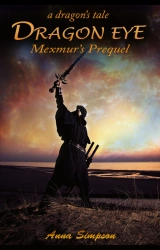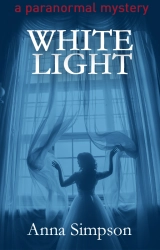 This post was written for the Author Toolbox Blog Hop where we share our new discoveries on the craft of writing, editing, querying, marketing, publishing, and blogging tips. Posted every third Wednesday of the month. For rules and sign-up click here.
This post was written for the Author Toolbox Blog Hop where we share our new discoveries on the craft of writing, editing, querying, marketing, publishing, and blogging tips. Posted every third Wednesday of the month. For rules and sign-up click here.
~~~oOo~~~
Besides giving us place to act out a scene, a setting can add other elements as well.
Backstory:
Some places have memories. I can’t drive by the local grocery store by my family home without remembering that a hospital once was there. The place I was born. The place I played after it was demolished.
It carries feelings that have never gone away. Your characters can carry attachments too. They go to a park, swimming hole, elementary school, etc. and become overwhelmed or flashback into their past. It’s not a choice.
They remember their first kiss or their one and only marriage proposal. They remember saying goodbye to an old friend and watching them walk away forever. The place their child was born. Or the last time they went skinny dipping.
Mood or Atmosphere:
Mood could be based on the protagonist’s memories or it could be as simple as weather or a social function that sets the mood or atmosphere.
Thunderstorms set a mood: it was a dark and stormy night. And a sunny day at the beach also give us a sense of wholesome fun. Until the water rises and the little kid making the sand castle at the water’s edge can’t be found anywhere.
Family barbecue is one feeling, and a funeral is another. A group gathered around a phone waiting for a call—kidnapper, job offer, or dream date.
Things to consider when planning a scene.
Antagonist:
People are not the only antagonists on the page. A disaster could stop them from achieving their goal. To save a life, they need to cross a washed-out bridge, or fix a tire without a tire iron. A blizzard could stop them from chasing after someone—villain or soul mate.
Not only stopping the hero, but also cutting them off from help. There is no rescue or police to investigate. The hero is on their own.
Whatever the circumstance it could increase the stakes.
Concrete Details:
Smells, sights, sounds, tastes, textures, internal feelings, space, time and the unknown should all be considered. Reactions to these specific details can be more powerful than any vivid description of setting, and characters.
End Result:
It’s all about reaction. Is it the history of the place? Is it the mood that always seems to hang over it like a cloud of doom? Or is it a physical problem like a washed out river. Any of these elements could be a contributing factor as a scene plays out?
No matter where you start, consider the setting.
What does your setting do for your story?
Have any techniques that help connect your characters to their setting? Please share. I’d love to read them. 🙂










You always have such helpful hints put together in an easy way to understand. Sharing is greatly appreciated.
sherry @ fundinmental
Sherry, you’re such a pal. What would I do without you. 🙂
The setting can be used as a character too. I know I used to want to go to Prince Edward Island in Canada so bad, because of the why L. M. Montgomery brought to life in her writings. I know fantasy employs in that way a lot, Disc World. This was a great post. Enjoyed.
Juneta @ Writer’s Gambit
Thanks, Juneta. Too bad I’m on the other coast–BC don’t you know. hehehe
With my scenes, the sense play a HUGE part in setting the “stage.” Atmosphere is all around us and the characters sense of sight, taste, smell, touch, etc. catapults the reader into the story and makes them feel like they are experiencing it with the character.
The characters reactions to the senses does draw a person in. 🙂
Setting is a wonderful tool to provide insights on the character’s state of mind or help build tension. The hardest for me at first was to know when I had too much info, or not enough. Finding the right balance can get tricky at times
Balance is key; feedback helps with this. 🙂
Great post 🙂 I like to use something specific to the character instead of focusing on everything at once (e.g. dark room, lightning, MC afraid of both and realising that she’s made the wrong choice – in more detail, of course).
I love it. 🙂
I love this post Anna. I like how you bring up disasters as potential antagonists.
Life is like that too. Sometimes the oddest things get in the way. 🙂
I sometimes like to play with opposites – a fun place with a bad memory or a creepy place with a peaceful backstory, etc. 🙂
Yes this! 🙂
I’d never thought about attachments before as it relates to setting, but I’m going to be all over it now! Thanks, Anna!
That’s exactly how I felt when someone told me. hehehe
Great tips for creating setting! A lot of times, I forget about setting. I tend not to need it when I’m reading a story, so I forget it in my own writing. But yes, you can definitely invest more than just a place and surroundings into it!
It can be fun to experiment with it. 🙂
I liked the way you humanized “settings” by explaining how it may act as an antagonist. I recently enjoyed a novel where the landscape was heavily used to mirror the traits of the characters. In fact, using descriptive imagery of settings to develop and symbolize characters, plot, themes, conflicts, etc. is the subject of my blog hop this month 🙂
Excellent, I’ll take a look. 🙂
I write for kids so young, often they don’t have too many memories of a place…they’re making those memories!
Good point. Thanks. 🙂
Setting plays a huge part in my books, as I tend to write about exotic places I’ve traveled now. But even before that, the claustrophobic small towns I set my stories in were key to how the characters reacted and events unfolded.
It can add a wonderful flavor to a story. 🙂
Pingback: Author Toolbox Blog Hop: Article Listing – E.M.A. Timar
Great post! I like the different ways of breaking down how setting can be used to really enhance the story. For me, I’m writing a story that really relies on the weather and climate to move the characters forward, plus it (hopefully) subtly hints at the more environmentalist themes I want to incorporate into the prose.
Thanks for sharing! 🙂
Weather is a wonderful character. Have fun with it. 🙂
Setting is always a must for me and I like them to be descriptive and atmospheric without taking over the story at the same time. I would image for the author, is a very fine line to toe.
Like special effects in a movie, we need them to make the story better, but sometimes less is more.
Great post and some great suggestions. I think this might help me since I’m moving a good chunk of my WIP to a location completely new to my protagonist and I was wondering how best to show their reaction to it.
It will be new and exciting then. 🙂
I hope so
Beautifully written: I love the way you describe settings!
I like using setting to drop hints.
If I include a river early on in passing, a crisis will probably happen there later on 🙂
Way to link it up. No words wasted in your work. 🙂
Great article. It’s all so true. My favorite question to ask myself about setting for each scene is: Is this the best place for emotional impact? This often makes me think of unique places a scene could be located.
Good question. I need to remember that. 🙂
A setting can do so much. You pointed out just how powerful a setting can be.
Thanks, Chrys. 🙂
Settings are my writing weakness. I struggle to add details to show the reader my characters aren’t living in a vacuum. It’s helpful if I chose a season. In my WIP, it’s early spring, so there’s lots of cold, rain, storms, mud, etc.
Thanks for your insight.
You’re welcome. 🙂
Great post! It’s with my newest draft that I’ve grasped how important setting can be, and I’ll be sure to incorporate your tips. Thanks for sharing!
I’m glad it helped. 🙂
My crit partners often tell me that they don’t see the environment around my characters. I concentrate so much on the character’s dialogue that I forget about the setting. Thanks for the ideas.
Anytime, Ken. I suffer from the same thing. 🙂
I like your point about the memories that certain places bring back. On their own, they might be quite ordinary settings, but once you reflect on what happened there, they become far more interesting.
That is how it works for me. 🙂
Hello ggirl,
how are you??? it´s been so long since I visited your blog.
Anyway, great topic as usual.
Hope everything is ok
XOXOXO
Ruty @Reading…Dreaming
I’m good. Nice to see you again. Thanks for dropping by. 🙂
Setting is sooo important. Great post!
Thanks, Jennifer. 🙂
Nice way to address what is often an overlooked element of world building. Great ideas for making setting about more than just a location.
I used to lose it in the shuffle all the time. Improving slowly but surely. 🙂
OMG, if only. My memory is like snowflakes in the sun.
Ha! Together then. 🙂
Pingback: Author Toolbox Blog Hop: A Year in Review – E.M.A. Timar